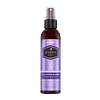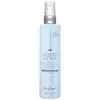What's inside
What's inside
 Key Ingredients
Key Ingredients

 Benefits
Benefits

 Concerns
Concerns

 Ingredients Side-by-side
Ingredients Side-by-side

Water
Skin ConditioningGlycerin
HumectantBiotin
AntiseborrhoeicHydrolyzed Collagen
EmollientCoffea Arabica Seed Oil
MaskingEthylhexylglycerin
Skin ConditioningCetrimonium Chloride
AntimicrobialMaltodextrin
AbsorbentMaltodextrin/Vp Copolymer
Pvp
Emulsion StabilisingPPG-3 Myristyl Ether
EmollientPolysorbate 20
EmulsifyingDehydroacetic Acid
PreservativeBenzoic Acid
MaskingDisodium EDTA
Sodium Hydroxide
BufferingSilicone Quaternium-22
Zea Mays Starch
AbsorbentPhenoxyethanol
PreservativePentaerythrityl Tetra-Di-T-Butyl Hydroxyhydrocinnamate
AntioxidantSodium Benzoate
MaskingCitric Acid
BufferingParfum
MaskingCitronellol
PerfumingCoumarin
PerfumingEugenol
PerfumingGeraniol
PerfumingHydroxycitronellal
PerfumingLimonene
PerfumingLinalool
PerfumingWater, Glycerin, Biotin, Hydrolyzed Collagen, Coffea Arabica Seed Oil, Ethylhexylglycerin, Cetrimonium Chloride, Maltodextrin, Maltodextrin/Vp Copolymer, Pvp, PPG-3 Myristyl Ether, Polysorbate 20, Dehydroacetic Acid, Benzoic Acid, Disodium EDTA, Sodium Hydroxide, Silicone Quaternium-22, Zea Mays Starch, Phenoxyethanol, Pentaerythrityl Tetra-Di-T-Butyl Hydroxyhydrocinnamate, Sodium Benzoate, Citric Acid, Parfum, Citronellol, Coumarin, Eugenol, Geraniol, Hydroxycitronellal, Limonene, Linalool
Water
Skin ConditioningDipropylene Glycol
HumectantCetyl Triethylmonium Dimethicone PEG-8 Succinate
Polysilicone-29
Hydrolyzed Vegetable Protein
Skin ConditioningArctium Lappa Root Extract
Skin ConditioningCetrimonium Chloride
AntimicrobialHydroxypropylgluconamide
HumectantHydroxypropylammonium Gluconate
HumectantCinnamidopropyltrimonium Chloride
Glycerin
HumectantTetrasodium Glutamate Diacetate
Sodium Hydroxide
BufferingGlycolic Acid
BufferingCaprylyl Glycol
EmollientHexylene Glycol
EmulsifyingSodium Coco Pg-Dimonium Chloride Phosphate
CleansingTartaric Acid
BufferingPolysorbate 20
EmulsifyingBHT
AntioxidantCitric Acid
BufferingPhenoxyethanol
PreservativeSodium Benzoate
MaskingPotassium Sorbate
PreservativeBenzyl Alcohol
PerfumingSodium Formate
BufferingSodium Glycolate
BufferingParfum
MaskingCoumarin
PerfumingWater, Dipropylene Glycol, Cetyl Triethylmonium Dimethicone PEG-8 Succinate, Polysilicone-29, Hydrolyzed Vegetable Protein, Arctium Lappa Root Extract, Cetrimonium Chloride, Hydroxypropylgluconamide, Hydroxypropylammonium Gluconate, Cinnamidopropyltrimonium Chloride, Glycerin, Tetrasodium Glutamate Diacetate, Sodium Hydroxide, Glycolic Acid, Caprylyl Glycol, Hexylene Glycol, Sodium Coco Pg-Dimonium Chloride Phosphate, Tartaric Acid, Polysorbate 20, BHT, Citric Acid, Phenoxyethanol, Sodium Benzoate, Potassium Sorbate, Benzyl Alcohol, Sodium Formate, Sodium Glycolate, Parfum, Coumarin
Ingredients Explained
These ingredients are found in both products.
Ingredients higher up in an ingredient list are typically present in a larger amount.
This ingredient is a preservative, antimicrobial, and emulsifier. It is often used in cosmetics for its ability to cleanse, condition, and reduce static.
Cetrimonium chloride is a quaternary ammonium salt, meaning it has a water-soluble structure.
Citric Acid is an alpha hydroxy acid (AHA) naturally found in citrus fruits like oranges, lemons, and limes.
Like other AHAs, citric acid can exfoliate skin by breaking down the bonds that hold dead skin cells together. This helps reveal smoother and brighter skin underneath.
However, this exfoliating effect only happens at high concentrations (20%) which can be hard to find in cosmetic products.
Due to this, citric acid is usually included in small amounts as a pH adjuster. This helps keep products slightly more acidic and compatible with skin's natural pH.
In skincare formulas, citric acid can:
While it can provide some skin benefits, research shows lactic acid and glycolic acid are generally more effective and less irritating exfoliants.
Most citric acid used in skincare today is made by fermenting sugars (usually from molasses). This synthetic version is identical to the natural citrus form but easier to stabilize and use in formulations.
Read more about some other popular AHA's here:
Learn more about Citric AcidCoumarins are a group of substances found naturally in plants. There are over 1300 types of coumarins identified. It has a natural vanilla scent.
Coumarin is an identified EU known allergy, meaning it may cause an allergic reaction when applied to the skin.
In many countries, coumarin is banned as a food additive. However, it can be found in soaps, tobacco products, and some alcohol drinks.
Plants use coumarins as a chemical defense. Some plants that have coumarins include lavender, tonka beans, and yellow clovers.
Learn more about CoumarinGlycerin is already naturally found in your skin. It helps moisturize and protect your skin.
A study from 2016 found glycerin to be more effective as a humectant than AHAs and hyaluronic acid.
As a humectant, it helps the skin stay hydrated by pulling moisture to your skin. The low molecular weight of glycerin allows it to pull moisture into the deeper layers of your skin.
Hydrated skin improves your skin barrier; Your skin barrier helps protect against irritants and bacteria.
Glycerin has also been found to have antimicrobial and antiviral properties. Due to these properties, glycerin is often used in wound and burn treatments.
In cosmetics, glycerin is usually derived from plants such as soybean or palm. However, it can also be sourced from animals, such as tallow or animal fat.
This ingredient is organic, colorless, odorless, and non-toxic.
Glycerin is the name for this ingredient in American English. British English uses Glycerol/Glycerine.
Learn more about GlycerinParfum is a catch-all term for an ingredient or more that is used to give a scent to products.
Also called "fragrance", this ingredient can be a blend of hundreds of chemicals or plant oils. This means every product with "fragrance" or "parfum" in the ingredients list is a different mixture.
For instance, Habanolide is a proprietary trade name for a specific aroma chemical. When used as a fragrance ingredient in cosmetics, most aroma chemicals fall under the broad labeling category of “FRAGRANCE” or “PARFUM” according to EU and US regulations.
The term 'parfum' or 'fragrance' is not regulated in many countries. In many cases, it is up to the brand to define this term.
For instance, many brands choose to label themselves as "fragrance-free" because they are not using synthetic fragrances. However, their products may still contain ingredients such as essential oils that are considered a fragrance by INCI standards.
One example is Calendula flower extract. Calendula is an essential oil that still imparts a scent or 'fragrance'.
Depending on the blend, the ingredients in the mixture can cause allergies and sensitivities on the skin. Some ingredients that are known EU allergens include linalool and citronellol.
Parfum can also be used to mask or cover an unpleasant scent.
The bottom line is: not all fragrances/parfum/ingredients are created equally. If you are worried about fragrances, we recommend taking a closer look at an ingredient. And of course, we always recommend speaking with a professional.
Learn more about ParfumPhenoxyethanol is a preservative that has germicide, antimicrobial, and aromatic properties. Studies show that phenoxyethanol can prevent microbial growth. By itself, it has a scent that is similar to that of a rose.
It's often used in formulations along with Caprylyl Glycol to preserve the shelf life of products.
Polysorbate 20 is made by combining ethoxylation of sorbitan, ethylene oxide, and lauric acid. It is a mild cleansing agent, surfactant, and emulsifier.
As a surfactant, it helps collect dirt and oils for washing. Emulsifiers prevent oils and water from separating.
Polysorbate 20 also adds scent to a product. Since it is made using sorbitol, it has a sweet scent. Sorbitol can also be found in fruits such as apples and peaches.
The lauric acid used to create Polysorbate 20 is often derived from coconuts.
Polysorbate 20 may not be fungal acne safe.
Learn more about Polysorbate 20Sodium Benzoate is a preservative. It's used in both cosmetic and food products to inhibit the growth of mold and bacteria. It is typically produced synthetically.
Both the US FDA and EU Health Committee have approved the use of sodium benzoate. In the US, levels of 0.1% (of the total product) are allowed.
Sodium benzoate works as a preservative by inhibiting the growth of bacteria inside of cells. It prevents the cell from fermenting a type of sugar using an enzyme called phosphofructokinase.
It is the salt of benzoic acid. Foods containing sodium benzoate include soda, salad dressings, condiments, fruit juices, wines, and snack foods.
Studies for using ascorbic acid and sodium benzoate in cosmetics are lacking, especially in skincare routines with multiple steps.
We always recommend speaking with a professional, such as a dermatologist, if you have any concerns.
Learn more about Sodium BenzoateSodium Hydroxide is also known as lye or caustic soda. It is used to adjust the pH of products; many ingredients require a specific pH to be effective.
In small amounts, sodium hydroxide is considered safe to use. However, large amounts may cause chemical burns due to its high alkaline.
Your skin has a natural pH and acid mantle. This acid mantle helps prevent harmful bacteria from breaking through. The acid mantle also helps keep your skin hydrated.
"Alkaline" refers to a high pH level. A low pH level would be considered acidic.
Learn more about Sodium HydroxideWater. It's the most common cosmetic ingredient of all. You'll usually see it at the top of ingredient lists, meaning that it makes up the largest part of the product.
So why is it so popular? Water most often acts as a solvent - this means that it helps dissolve other ingredients into the formulation.
You'll also recognize water as that liquid we all need to stay alive. If you see this, drink a glass of water. Stay hydrated!
Learn more about Water